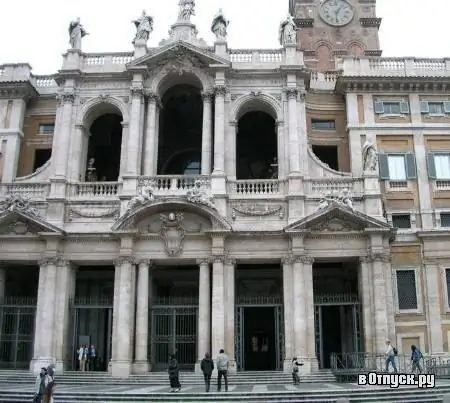
Description of the attraction
The first church building, which preceded the modern basilica building, was built in the 4th century on the Esquilia hill. This church was called Santa Maria della Neve (from Italian neve - "snow"). There is a legend that before the foundation of the church in the summer of 352, snow suddenly fell and Pope Liberius drew a circle in the snow around the perimeter of the future church. The Basilica of Santa Maria Maggiore was completely rebuilt in 432-440 by Pope Sixtus III on the eve of the Cathedral of Ephesus. In this form, the basilica stood until the 13th century, until, under Pope Eugene III, a portico was built in front of the main entrance to the church. At the end of the same century, under Pope Nicholas IV, the apse was renewed, and in the 18th century, under Clement X, the portico was demolished, and the facade acquired the form that the basilica has to this day. The architect of this project was Ferdinando Fuga.
The basilica's façade is sandwiched by two tall palaces dating from the 17th and 18th centuries. Wide steps of the staircase lead to a portico with an architrave, over which a loggia with arches rises. The facade is crowned with a balustrade, which also runs over the neighboring palaces, as if uniting the whole complex together. The facade and portico are richly decorated with sculptures, and on the top floor loggia there is still a 13th century mosaic from the facade of the former church.
The interior is a three-aisled basilica plan with forty Ionic columns. The painting of the high ceiling is attributed to Giuliano Sangallo. It is believed that the richly decorated ceiling was made of gold, first brought here from America and donated to the basilica by the kings of Spain, who were generous patrons of the church.






